.jpg)
Alfa Romeo Giulia Saloon Review (2023)
.jpg)
Introduction
We know the scenario.
You are after an executive car. Something with character, a little bit sporty, but also sophisticated.
And yet every motor you see is an Audi, BMW or Mercedes-Benz – or maybe a Jaguar and, to a lesser extent, a Volvo.
The solution? Enter the Alfa Romeo Giulia.
It has a style that the traditional premium Euroboxes can’t compete with – and it has far more exclusivity, too.
While you'll lose count of the number of BMWs you'll see in a typical commute; you'll likely be able to count the number of Alfas you see.
The Giulia might be an outlier, but for those who want something that stands out from the crowd, it makes so much sense.
That is the theory on paper, anyway. But theories sometimes only work in practice.
Seven years after the Giulia first arrived in the UK, Alfa Romeo has strengthened its argument by giving the car an overhaul, improving the interior, its infotainment system and making some styling tweaks at the front.
This includes its new ‘triple’ headlight formation, which features three LED segments on each side, matching the design of the new Tonale hybrid crossover.
The trim levels have been simplified, and most of the engines discontinued, so we'll hope what's left over still does this gorgeous ride justice.
Select's rating score* - 3.9 / 5
At A Glance
Looks are a vital ingredient in any Alfa Romeo – and the typical Italian-themed styling has spared no exception here.
While many saloons don’t lend themselves to particularly fanciful exterior designs, Alfa has bucked the trend, blending a mixture of straight lines and curved edges.
.jpg)
The front is spectacular, with Alfa Romeo’s signature triangular grille taking centre stage, while the lower grille is more imposing than before.
The new headlight design adds an additional element of aggression, too, not that the Giulia needed it.
Creases running along the bonnet add even more muscularity, while additional pleats at the sides run through the door handles, with a sculpted side skirt complementing its athletic presence.
Around the back, the boot lid builds a very modest spoiler effect into its natural shape, while a diffuser effect concludes its sporty characteristics.
Parked next to a BMW or Audi, the Italian wins the beauty contest, hands down.
It is stunningly beautiful, and while the endless streams of German saloons pass by unnoticed, you’ll be turning heads when you thunder by in this.
But an Alfa Romeo that’s nice to look at is nothing if it doesn’t perform on the road.
So, the big question is: can it beat its German foes where it counts?
.jpg)
Key Features
As we said earlier, Alfa Romeo has simplified the trim levels, now offering three to choose from.
Entry-level Sprint grade gets 18-inch dark alloys, an 8.8-inch infotainment screen with SatNav, Apple CarPlay, Android Auto and a DAB radio. It also boasts a 12.3-inch digital instrument cluster, wireless charger, ambient lighting, an air quality system, electrically adjustable folding door mirrors, keyless go and a start/stop button.
.jpg)
The Veloce trim gets 19-inch alloys, a limited-slip differential, six-way electrically adjustable front seats with four-way lumbar adjustment, heated front seats and steering wheel, upgraded brakes, gloss black window surrounds and aluminium interior styling.
The flagship Competizione obtains gloss black exhaust finishers, tinted rear windows, dark interior headlining, aluminium sports pedals, red brake callipers, Synaptic Dynamic Control suspension, a leather sports steering wheel and a Harman Kardon sound system.
In terms of engines, there’s no diesel now, which has been discontinued – and no hybrids, of which Alfa Romeo has been a little slow on the uptake.
In fact, it leaves a choice of just one: a 2.0-litre turbocharged petrol lump producing 280PS, with an eight-speed automatic.
.jpg)
The good news is the ultra-fast Quadrifoglio, a new version of which will be arriving soon, keeps its 2.9-litre V6, but we’ll be excluding this BMW M3 rival in this review.
While the lack of choice might be a disappointment, it does mean that the rear-wheel drive Giulia is effectively filling a gap in the leasing market.
That hole is being created by manufacturers who are ditching powerful petrols for heavy all-wheel drive plug-in hybrids with tiny petrol engines, electric motors and battery packs.
Besides, we know an all-electric Giulia is on the way at some point in the future, so this could be your final chance to enjoy a car that’s agreeable to Alfa traditionalists.
That is good enough for us for now, so we’ll grab the keys to our 2.0-litre engined Giulia test car, which comes in mid-range Veloce trim.
.jpg)
Performance & Drive
The engine deals with 0-62mph in a perfectly reasonable 5.7 seconds, which isn't bad for a 2.0-litre; if anything, it feels quicker than this.
It is capable, too, constantly feeling like there's plenty of clout in reserve, and the throttle response is pleasingly quick, launching you off the line.
While it’s not mega fast, it feels performative and reasonably exciting to drive. And overall, it serves to impress with an excellent sound.
The gearbox is responsive, too, especially when using the paddle shifters, which feel racey and pleasing to pull, offering a premium feel in our test car with the Veloce trim.
.jpg)
It changes up instantly, although, in automatic mode, it can be cautious about changing down under acceleration.
Mind you, that’s something true of most automatics, so it’s something we can live with.
Alfa Romeo has engineered the Giulia with 50:50 weight distribution to ensure the vehicle is well-balanced and, as a result, always feels well-planted and settled.
The handling is improved in this mid-range model with its limited-slip differential, which helps maintain grip under acceleration. So, it’s handy for powering out of bends, which is something you’ll love doing in the Giulia.
It is agile, nipping around corners excitedly, putting a smile on your face if you dare to test its limits, and there’s plenty of grip.
.jpg)
This makes tackling twisty B-roads a lot of fun, more so than most of its challengers. But the BMW 3 Series M Sport is the class leader and about as close to perfection as you can get without going for the mighty M3.
The traction control stays on, though, so those with a little more driving ability might be disappointed. But we had lots of fun in it despite this.
The wheel is reasonably well-weighted, although newer Alfas tend to have slightly lighter steering, and it's the same here in the Giulia.
If you are used to performance driving, you might wish it was a bit heavier. But you quickly get used to its sensitivity and precision, which gives you great confidence in placing the motor around fast bends.
The wheel weight can be changed by selecting one of the three driving modes available: Dynamic, Natural and Advanced Efficiency, which alters the throttle response.
Despite its athletic attributes, Alfa Romeo has retained a decent level of ride comfort which, even on the 19-inch alloys of our Veloce test car, still provides a reasonably absorbing experience.
In theory, you should get an even more forgiving ride at entry-level on the Sprint trim’s 18-inch wheels.
.jpg)
Running Costs & Emissions
The only powerplant in the range is the turbocharged 2.0-litre petrol engine, which can manage up to 39.2mpg.
That is not bad for a vehicle with 280PS. But then, this is a car designed to be driven and revved, so if you achieve anywhere near that in practice, we’ll be amazed.
Emissions measure in at 169g/km of CO2.
We have seen worse. But you won’t be seeing many Giulias as company cars, as the lack of plug-in hybrid options makes it unviable due to the significant savings hybrids attract in Benefit In Kind tax.
Add that to the fact that some of its rivals, including the superb BMW 330e M Sport, are now plug-in hybrids, and the Giulia becomes a pointlessly expensive endeavour to have one through your employer.
.jpg)
And, even if you’re not a company car user, any plug-in hybrid’s economy figures will blow the Giulia’s out of the water. You can find out more about whether a hybrid range would suit your needs in our guide explaining electric car range.
Average running costs for the Giulia are likely to be higher than many of its premium adversaries, too, with road tax significantly more expensive.
And that’s before we factor in reliability.
While the German premium brands have little to shout about themselves nowadays, Alfa has been languishing in the doldrums for years. And sadly, the Italian manufacturer has done little about this poor reputation since.
The Giulia is no exception, with the model frequently coming towards the bottom of reliability league tables, along with the Alfa brand as a whole.
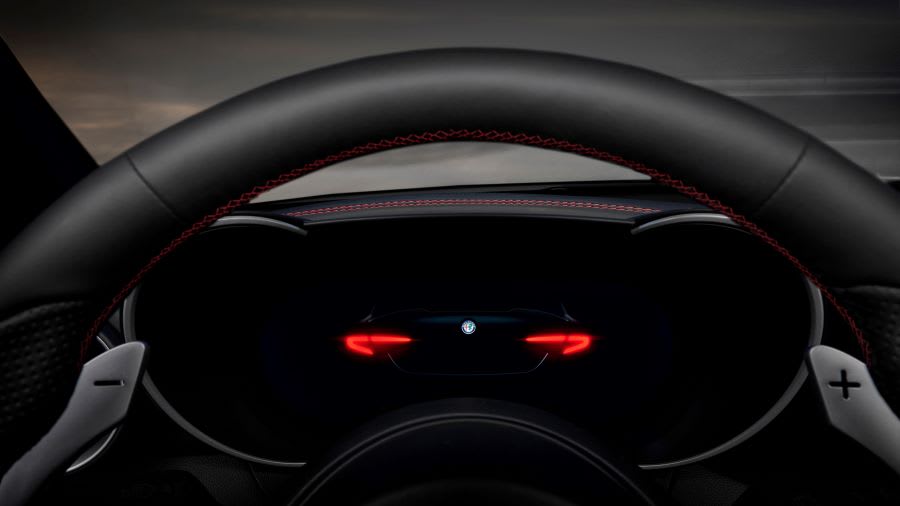
Interior & Technology
Some modern-day Alfas have been a bit lacking in the interior design department, which, thanks to the Italian obsession with style and fashion, should be one of its strongest points.
The Alfa Romeo Giulia, though, is arguably bang on the money.
The first thing to catch our eye is the boldness of the steering wheel, which makes it inviting to hold, especially with the large metal paddle shifters behind it on our Veloce test car.
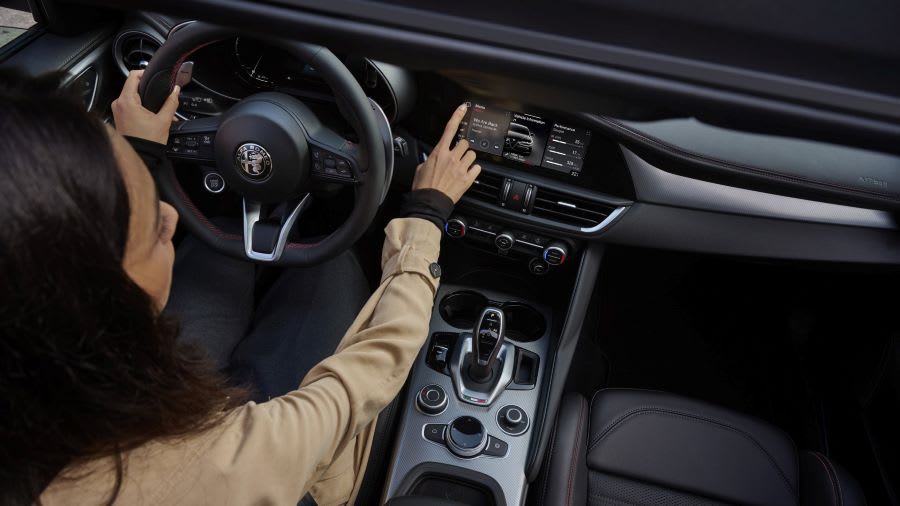
The dashboard curves round slightly, too, so it’s facing the driver, while the centre console is nicely laid out with dials, which feel solid, and a small gear lever.
The infotainment screen isn’t the biggest, but it’s cocooned by the shapely dashboard upholstery above a couple of silver-surround air vents.
The system is an improvement on the old one, with the rotary dial offering a nice, convenient controller. But the screen layout and menu options still aren't as lovely as in its main rivals.
.jpg)
The screen isn't the sharpest, and it feels like it's lacking something. At the same time, the 12.3-inch digital instrument cluster isn't as customisable as in some of the Giulia’s competitors either, offering three pre-set modes.
BMW has long been the class leader here when it comes to such digital systems. And, while we weren’t expecting Alfa Romeo to match it, we thought it would get closer than this, although what the automaker has provided isn’t terrible by any means.
Our test car has plenty of aluminium décor, too, which adds to the upmarket feel. Plus, physical controls have been retained for the air conditioning system.
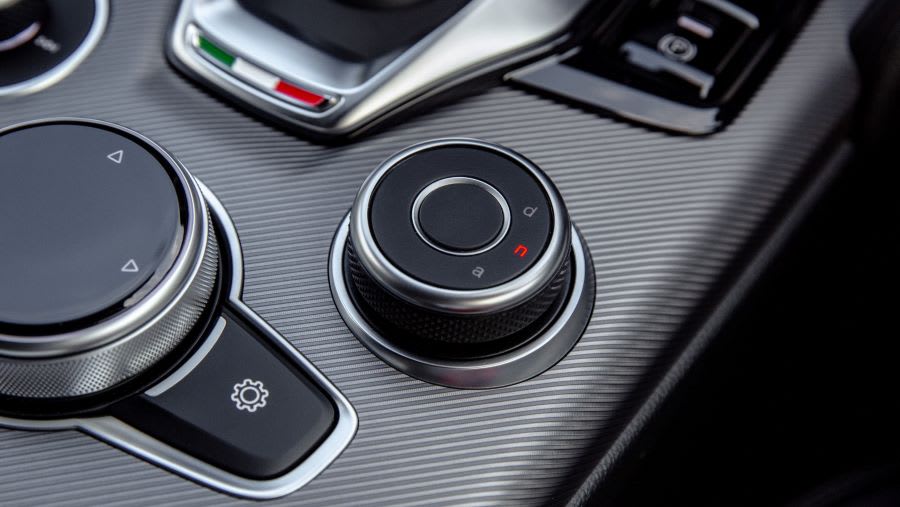
Practicality & Boot Space
Our Alfa Romeo Veloce grade comes with electrically adjustable seats, which makes it easy to find a suitable driving position.
The seats are comfy, and there's quite a cockpit-like feel about the driver's position, but although you feel securely cocooned, you're not short on room.
That is not quite as true on the entry-level Style trim, whose seats don’t hug your body quite as much.
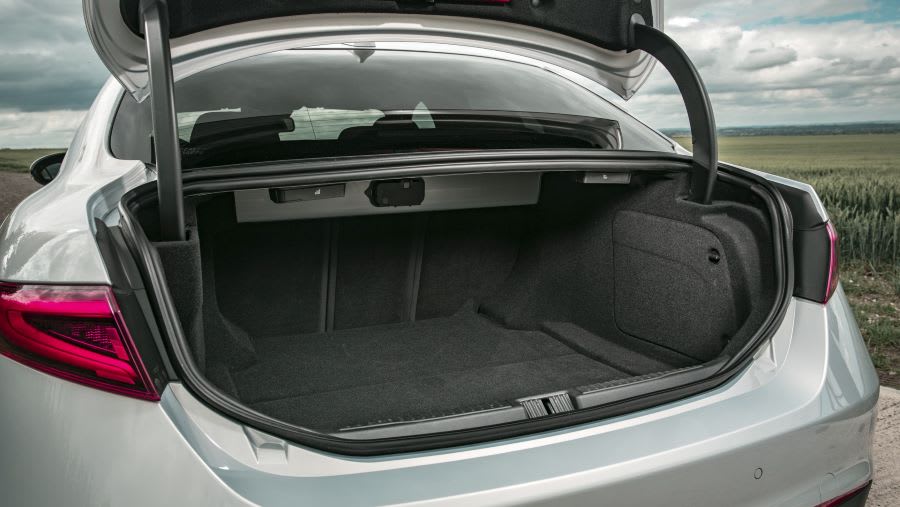
There is a hearty amount of space in the front, with plenty of headroom and legroom, so even taller drivers won’t feel short-changed, although the roof isn’t exceptionally high, so you may find you need to lower your seat.
It is a similar story in the back, although you’ll struggle to fit three adults in for anything other than a short journey.
The door bins and glovebox are an average size, but there are a couple of cupholders in the front and rear that’ll accommodate small bottles, with more space in the central armrest and an area to store things beneath the wireless phone charger.
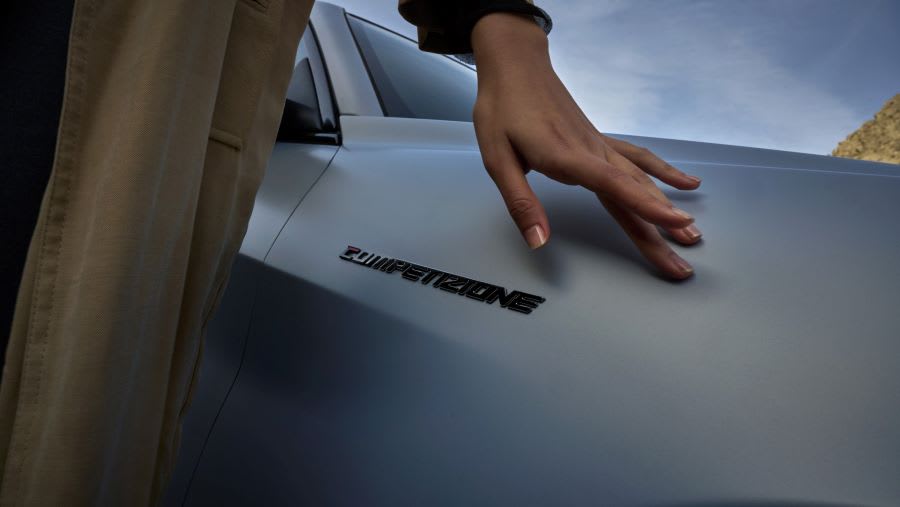
Front visibility is about what you’d expect, although out of the rear, it's more challenging as the pillars are substantially thicker. But you get front and rear parking sensors plus a reversing camera across the range.
Boot capacity measures 480 litres, which is expandable by folding the back seats in a 40:20:40 formation, which makes it as convenient as possible.
Alfa Romeo doesn't provide a capacity figure with the seats folded, but it's around 1,500 litres in the BMW 3 Series, whose base figure isn’t much larger than the Giulia’s.
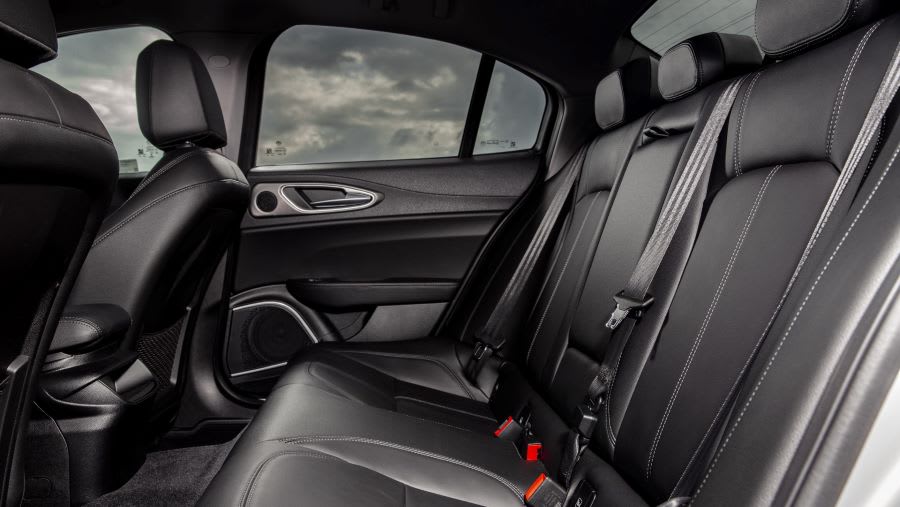
Safety
The Alfa Romeo Giulia was awarded a five-star safety rating by crash-test watchdog Euro NCAP, although this was in 2016, and the rating has now expired.
Nevertheless, it scored a whopping 98% for adult occupants, 81% for children and 60% for safety assists.
Euro NCAP has changed its criteria since then, plus more safety tech has been added to the car, so these figures don’t reflect how well it might do today. But at least they provide some reassurance that you’ll be well protected in an accident.
Safety features include automatic emergency braking, a tyre pressure monitoring system, lane departure warning, automatic headlights, automatic high beam, and blind spot detection with rear cross path alert.
Veloce and Competizione grades get upgraded brakes, too.
An optional extra, called the Driver Assistance Pack Plus, adds active blind spot, lane keep assist, traffic sign recognition, drowsy driver detection, intelligent speed control, traffic jam assist and highway assist system.
.jpg)
Options
Seven shades are offered on the Alfa Romeo Giulia: white, red, black, blue, dark grey, light matt grey and dark red.
You can also have a red interior if you wish or add red brake callipers (they’re included as standard on Competizione).
An electric sunroof can be specified as an option on all models, while there are also several optional packs.
The premium interior and sound package adds a leather dashboard and Harman Kardon premium sound system.
The leather seat pack is also available for the entry-level Sprint trim, which adds sports leather seats, six-way power-adjusted heated front seats with lumbar support, a heated steering wheel, and a power bolster.
This bundle isn’t available on the top two grades as you get all this as standard.
And, of course, there’s also the additional safety kit we mentioned earlier.
.jpg)
Rival Cars
The Alfa Romeo Giulia will naturally fancy its chances in taking on the powerhouses of BMW's 3 Series (below), Audi's A4 and Mercedes-Benz's C-Class.
How successfully it does that is up for debate, although the discussion is very short when it comes to looks.
The Jaguar XE and the Volvo S60 are also worth bearing in mind.
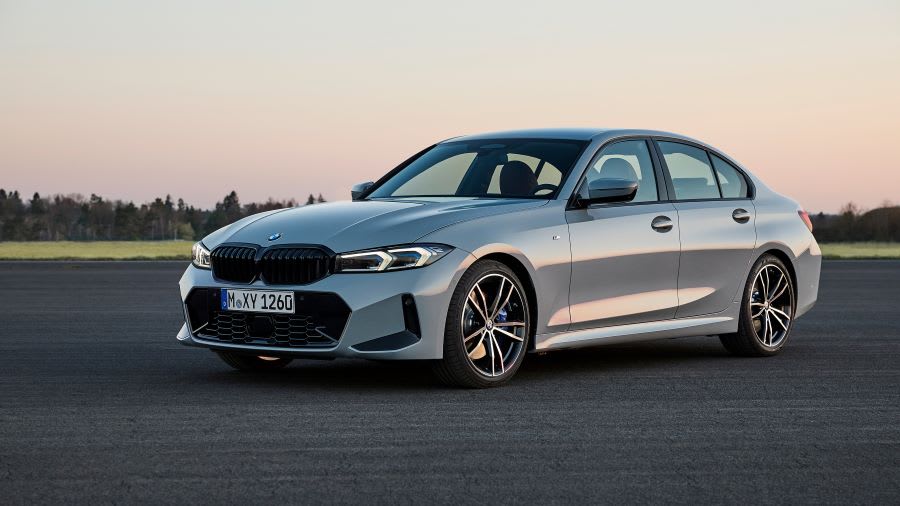
Verdict & Next Steps
Overall, the Alfa Romeo Giulia is a desirable car with plenty to offer.
It is not just all about the looks – it delivers where it matters, too, with a well-refined engine, excellent handling characteristics and a lovely interior.
It is engaging to drive and will undoubtedly suit driving enthusiasts who want to enjoy a car's personality rather than just get from A to B.
.jpg)
The equipment levels are generous, and it's not bad for fuel economy, given the amount of power on offer.
However, as good as the Alfa Romeo Giulia is, it also has a high list price, with the BMW 330e M Sport plug-in hybrid available for less than the mid-range Veloce model.
As a result, we'd recommend the entry-level Sprint trim to lease, especially as it comes well-equipped.
The Giulia is so tempting, but you’ll lease this with your heart, not your head. That is sometimes a good thing, though.
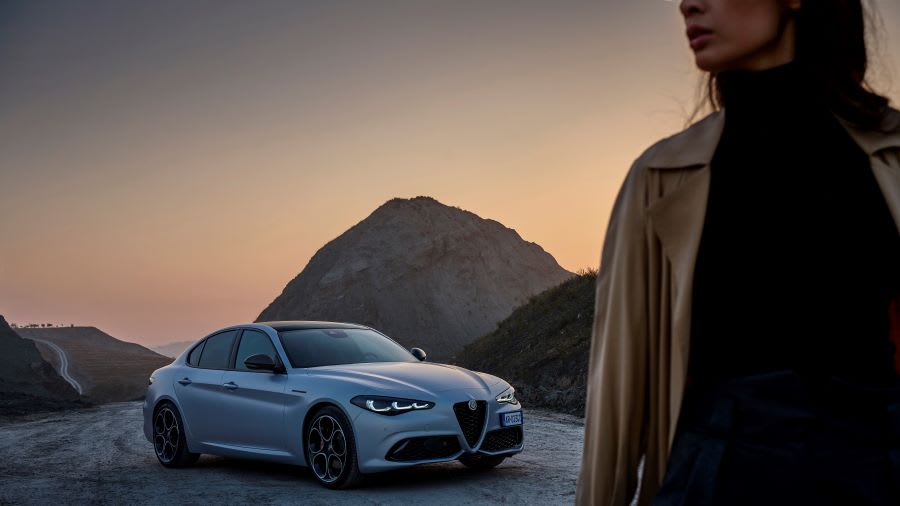
Where to next?
View latest Alfa Romeo Giulia leasing deals - from just £373.79 per month inc VAT**.
Call us on 0118 3048 688 or hit the green 'Enquire' button for more details.
Looking for a great leasing deal? Check out our incredible range of car lease deals.
New Saloon? Read our latest Car Reviews and find the right model for you.
Want to know more about leasing? Take a look at our comprehensive Leasing Guides.
Interested in everything motoring? Why not catch up on all the latest Car Leasing News.
**Score based on Select’s unique meta score analysis, taking into account the UK’s top leading independent car website reviews of the Alfa Romeo Giulia
**Correct as of 06/06/2023. Based on 9 months initial payment, 5,000 miles over a 48 month lease. Initial payment equivalent to 9 monthly payments or £3,364.11 (Plus admin fee) Ts and Cs apply. Credit is subject to status.





















